Touring the massive archeological site of Machu Picchu – filled with uneven stone steps and many levels – is already a workout! However, if you want even more exercise after touring the ruins, the sanctuary offers additional hiking for those with a reasonable level of fitness and a spirit of adventure.
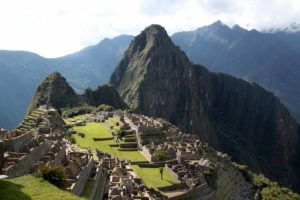 The four main options include a relatively flat hike to the Inca Bridge, a hearty hike up to the Sun Gate, a steep climb up Huaynu Picchu peak or a major trek up Machu Picchu Mountain. Besides getting an incredible workout, you’ll get to see some beautiful new vantage points over the ancient citadel. Of course, remember you’re doing these hikes at high altitude (over 8-9,000 feet)!
The four main options include a relatively flat hike to the Inca Bridge, a hearty hike up to the Sun Gate, a steep climb up Huaynu Picchu peak or a major trek up Machu Picchu Mountain. Besides getting an incredible workout, you’ll get to see some beautiful new vantage points over the ancient citadel. Of course, remember you’re doing these hikes at high altitude (over 8-9,000 feet)!
Two of the hikes/climbs – Huaynu Picchu and Machu Picchu Mountain – need advance reservations and there is a fee (in addition to the Machu Picchu ticket price). Both of them are limited to just 400 people each day. The other two, the Sun Gate and Inca Bridge hikes, are free and do not need to be scheduled ahead.
However, if you’re someone like me who has a significant fear of heights (and steep drop-offs), the Sun Gate hike is the only real option that won’t terrify you. The other three are definitely not for acrophobes, in some or many of their sections. In this post, I will share my personal experience with the beautiful Sun Gate hike and information (and photos) from travel mates who have done the other options.
My Hike to the Sun Gate
The Sun Gate (Inti Punku) is at the top of a mountain overlooking Machu Picchu. It was believed Inti Punku was the control gate for anyone entering or exiting the citadel in the days of the Inca Empire. Today, the Sun Gate is where trekkers on the “classic” 4-day Inca Trail get their first well-earned view of Machu Picchu at the end of their long hike.
I trekked the Inca Trail many years ago. I will always remember arriving at the Sun Gate to the thrill of seeing the majestic scene below, bathed in the early morning sunlight. On my second trip to Machu Picchu, I couldn’t wait to hike back up to the Sun Gate (going the other direction this time!) to relive that wonderful memory.
- Credit: Deb Limon / Machu Picchu & trail to Sun Gate (upper left)
- Click on photos to enlarge
- Start of Sun Gate trail
Two friends joined me on the hike. The trail to Inti Punku – which is well signposted – starts from the upper area of Machu Picchu. It follows an original stone-stepped Inca Trail, first through some beautiful agricultural terraces. You steadily climb up to the summit of the mountain where the Sun Gate is located at an elevation of 8,924 feet (2,720 meters). The hike up is around a 950-foot elevation gain.
Departing at 10am, it took us about 1 ¼ hours to walk up to the Sun Gate. There at the top, we joined other happy onlookers to relax a while and enjoy the magnificent views. The hike down was, of course, much 
Climbing Huaynu Picchu Peak
As seen in most Machu Picchu photos, Huaynu Picchu (meaning “young peak” in Quechua) is the beautiful mountain towering more than 1,000 feet above the north end of the citadel. When you look at the mountain, it’s hard to imagine that there is a way to get to the top, but there really is a trail – in fact, one built by the Incas!
Climbing Huaynu Picchu is very popular with visitors – for the physical challenge, the interesting trail (with steps cut out of the rocks), and for the amazing views that will reward you at the top (as long as the weather cooperates). One source states: Even though it’s a strenuous climb with some parts where you will actually need both hands and feet, the climb is quite possible for all visitors of average fitness.
However, I add my further caution: The hike is not for people with a fear of heights and steep drop-offs!
Back in 2002, when I first visited Machu Picchu, climbing Huaynu Picchu didn’t need any pre-planning. You just showed up and signed in on a log book at the Warden’s hut where the trail/hike began. Because of my fear of heights, I stayed behind while five of my friends climbed the peak.
Tickets: These days, you need to make a reservation in advance to climb Huaynu Picchu – for a specific day and time. Only 400 people (in two groups) are allowed to climb the peak each day. The first group of 200 must depart between the hours of 7am-8am and the second group departs between 10am-11am. (credit: all Huaynu Picchu photos below by Deb Limon).
The climb takes around 1.5-2 hours up and around 45 minutes to 1 hour to come down. The trail winds around the side of the mountain which lets you see Machu Picchu from different angles. It passes by structures built by the Incas that are precariously perched on the side of the mountain with sheer drop offs to one side. Near the top, you go through a tunnel carved in the rocks.
- Great views from the top
Luckily, I was able to vicariously enjoy the hike through the experiences of my friends and the photos that they shared – and I’m sharing with you now. Some of these pictures still make me hyperventilate! So, if you have any fear of heights and you are considering the hike, I would strongly recommend further research to see if this is really right for you.
Machu Picchu Mountain (Cerro Machu Picchu)
The hike to the top of Machu Picchu Mountain, which anchors the opposite (southwest) end of the Machu Picchu citadel, is much less traveled than Huaynu Picchu and the other hikes. Apparently, the views from the top are spectacular. You have great vistas of the entire area surrounding the ruins, including the Urubamba River winding around Machu Picchu like a coiled snake far below.
Warning: Like Huaynu Picchu, the Machu Picchu Mountain trek is not for people with a fear of heights. In places, the trail is very steep and often follows the mountain edge with sheer drop-offs.
This is definitely considered a challenging hike. The peak, located at 10,007 feet (3,050 meters) above sea level, rises twice as high as Huaynu Picchu above the citadel. One source gives the elevation gain from the Machu Picchu site up to the peak as 2,139 feet (652 meters). That’s quite a trek!
Tickets: You need to make advance reservations for this hike. Tickets are limited to 400 each day, with a 7am – 11am gate entrance time. The tickets are purchased as part of a combination ticket with the Machu Picchu general entrance. As always, double check entry times as times may change.
It takes around 30 minutes to walk from the Machu Picchu sanctuary entrance to the Machu Picchu Mountain warden’s hut, where you show your passport and ticket. You initially follow the same trail as the Sun Gate before signs direct you off to the right (to get to the hut).
The Only Peru Guide states: As the trail gets closer to the base of Machu Picchu Mountain, the steps become steeper, narrower and more challenging. Winding on for another 30 minutes or so, the trail passes through a stone gateway, before following a narrow mountain ridge to the summit.
Depending on your speed, the trek up the mountain should take between 1.5 hours to 2 ¼ hours and at least another hour to 1.5 hours to come down. You should be well acclimatized to altitude before attempting this trek – because no matter how fit you are, you will feel the effects of the thin air!
- Photos by Johnathon Purcell
On my last trip to Machu Picchu, three members of my group did this hike. They were young men (late teens, early 20s) and very fit. They enjoyed the trek but did admit it was hard. A couple of them suffered the effects of not taking enough water on the hike, so please make sure you are adequately prepared if you do the trek.
Chris, a woman friend of mine (in her 40s), did the hike this past year and shared her thoughts:
The hike up MP mountain was the most difficult hike I have ever done so far. The trail consisted of climbing uneven rock stairs, varying in height (12-24 in.) and depth (6-12 in.) the entire way. There were no easy or flat parts. I felt like I was on one of those stair climbers at the gym for a solid two hours! I had to fight to get to the top! It was not easy going down the steep stairs either. You really have to watch your footing. My legs started giving out on me and I had to go down sideways for a lot of it. The view at the top was extraordinary and I would do it again in a heartbeat!
Inca Bridge
The short (approximately 40 minutes round trip) and relatively flat hike to the Inca Bridge is free and open to all. The hike follows an Inca Trail to a place where you can observe an original Inca drawbridge. You can’t cross the bridge because it’s in poor condition, so you view it from a close range. The drawbridge was used by the Incas to protect the western entrance to Machu Picchu.
The Inca Bridge trail (dirt and stone steps) begins within the Machu Picchu sanctuary. There is another warden’s hut, where you sign in. Warning: In some places on the trail, there are sheer drop-offs of several hundred meters so, of course, you need to be very careful. Thus, it might not be an appropriate (or fun) hike for acrophobes or safe with small children.
- Credit: TheOnlyPeruGuide.com
- Credit: TheOnlyPeruGuide.com
Summary/Reference
I hope you’ve gotten some helpful information for planning your trip to Machu Picchu and adding an optional hike, if your time, desire, and fitness levels permit.
Please check out The Only Peru Guide website (links below) for helpful information about each hike:
To Learn More about Machu Picchu: Read my post: Machu Picchu – Experience Peru’s Magical “Lost City of the Incas”
Here’s a good article from “OutsideHow” that you might enjoy on How To Find Hiking Trails (from all around the world).
COMMENTS: Have you been to Machu Picchu and done any of these hikes? What was your experience? If not yet, would any of these hiking options appeal to you?








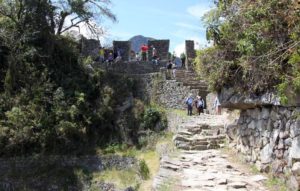



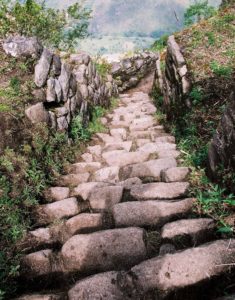

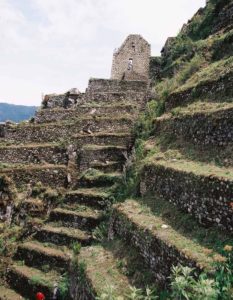







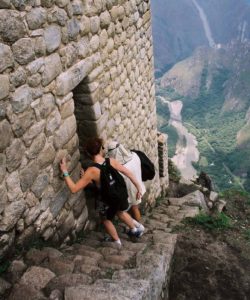




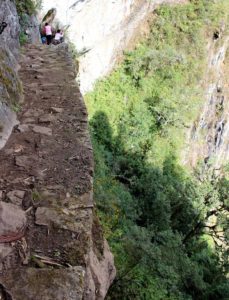
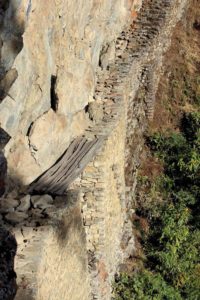



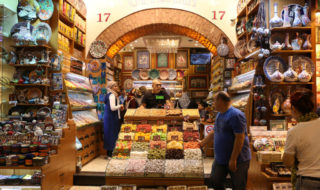
Post a Comment